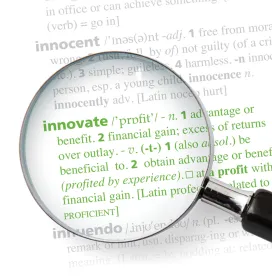On November 2, 2016 the United States Patent and Trademark Office (USPTO) issued a memo to Examiners on its stance on subject matter eligibility in response to the McRO and BASCOM Federal Circuit decisions. The USPTO will be updating its subject matter eligibility guidance in view of these decisions and also the Amdocs decision, which issued the day before the USPTO published its memo and thus is not addressed therein.
 In McRO, the Federal Circuit held claims patent eligible based on the incorporation of particular claimed rules in computer animation that “improved [the] existing technological process” by allowing the computer to do something it could not previously do. In light of McRO, the USPTO instructed Examiners to not overgeneralize the claim or simplify it into its “gist” or core principles, when identifying a concept as a judicial exception.
In McRO, the Federal Circuit held claims patent eligible based on the incorporation of particular claimed rules in computer animation that “improved [the] existing technological process” by allowing the computer to do something it could not previously do. In light of McRO, the USPTO instructed Examiners to not overgeneralize the claim or simplify it into its “gist” or core principles, when identifying a concept as a judicial exception.
The memo emphasized that “improvement in computer-related technology” is not limited to improvements in the operation of a computer technology per se, but may also be found in a claimed set of rules that allow the computer to perform a function not previously performable by a computer. Examples of when to find improvements in computer-related technology include: (1) a teaching in the specification of how the claimed invention improves a computer or other technology; and (2) a particular solution to a problem defined by the claimed invention, rather than a claim directed to the idea of a solution or outcome. This provides clearer guidance to practitioners on what to include in a specification and should also pave the way for true software-based innovations to be allowed by the general examining corps, without resorting to pre-appeal and appeal options.
In BASCOM, while the Federal Circuit agreed that each claim element was found in the prior art, the ordered combination of the claimed elements was not. The memo in turn instructs Examiners to consider the ordered combination of elements when considering whether a claim amounts to significantly more than an alleged abstract idea. In our view, this means that if the ordered combination of claim elements cannot be found in the prior art, then the ordered combination of claim elements cannot be generic or conventional.
The memo touches on the issue of preemption, but only so far as to rebut an Applicant’s rebuttal of an Examiner’s finding of subject matter ineligibility. To perform this rebuttal Examiners have been instructed to follow the McRO and BASCOM guidance, which they should have been doing in the first instance.
The memo concludes with instructions to Examiners to avoid relying on non-precedential decisions, such as SmartGene and Cyberfone, unless the facts of the application under examination match the facts of the non-precedential decision. Very few cases being examined today match the facts of SmartGene and Cyberfone and therefore we should see a reduction in the roadblocks to patentability that are currently caused by these non-precedential decisions.
Examiners that we have spoken to since the memo was published find the guidance provided therein to be troubling. They feel that the USPTO has moved from an “allow nothing” stance to an “allow everything” stance. This is not unique and follows the same pattern seen in the aftermath of KSR.
Applicants should feel relieved that the law surrounding subject matter eligibility is falling in-line with modern innovation. Both the courts and the USPTO have shown understanding that innovation can be found in software and this should lead to a renewed faith by inventors that their inventions will be protected.




 />i
/>i

